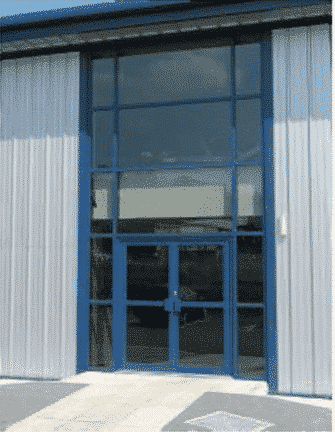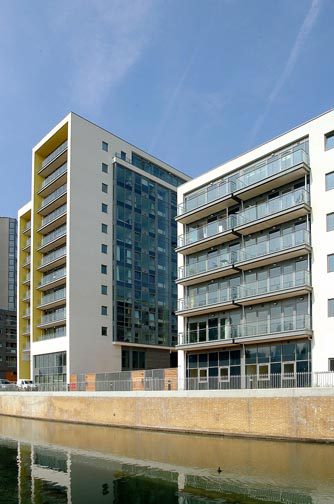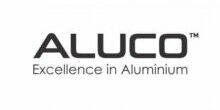Aluminium Commercial doors are often required to perform an emergency exit function to commercial and public buildings. Where fire exit doors are required, they will be fitted with either push to exit panic bars (also referred to as crash bars) or push to exit paddle handles.

Door closers form an integral part of commercial door hardware to fire exit doors. Normally fitted as concealed overhead door closers or face fixed closers, they perform the function of controlling the closing action and closing speed of the aluminium door.
Door closer selection will largely depend upon the size of the door leaf in question, the weight of the glass and the force of the closer to meet current regulations under the Equality Act 2010. These door closers will also need to be specified as either hold open or non hold open.
What is a hold open and non hold open closer?
A non hold-open closer does not keep the door open. Once it is opened past the 110 degree point it will commence the closing action of the door. A hold open closer is designed to hold the door open when the door is opened past 110 degrees. Simple pushing of the door towards the closed position, activates the closer and it also commences the closing action of the door.
Do aluminium fire exit doors require hold open or non hold open closers?
There is no hard and fast rule regarding whether a hold open or non hold open closer is required to fire exit doors. The correct type of closer will largely depend upon the intended function of these doors. Some aluminium commercial doors that are purely emergency exit doors may remain shut for long periods of time until an emergency escape situation occurs. Other doors designated as fire exits may still be used by users as entry and exit doors.
A hold open closer may be suitable where a building has a large number of users and the doors will be required to stay open in an emergency escape situation.
In buildings where the doors are used as entry and exit doors consideration should be given whether these doors are required to latch shut every time. The non hold open closer will ensure that the door leaf closes every time, therefore in these situations, the use of a non hold open closer may be preferable.
Hold open and non hold open closers are not just for emergency exit doors.

Many aluminium commercial doors are used in apartment buildings fitted with an electric release or access control system so residents can gain entry into a building. Security is the key consideration with these types of doors and in most cases to keep the building secure, they will be required to latch shut every time. These types of doors should be specified with non hold open closers.
Other types of commercial doors may serve many other functions. Some shops like to leave their doors held open during opening hours. Other doors may be used used to move items in and out of buildings. Where the doors are regularly required to be kept open for any length of time, hold open closers are ideal.
The correct door closer will largely depend upon the function of the door and how the building is used. Should a building come under new ownership or the function of the doors need to change, the door closers can easily be changed from hold open to non-hold open and vice versa











